
Buried among the overgrown jungle at the North-Eastern edge of Sentosa island lies Fort Serapong, a sprawling abandoned military complex complete with tunnels, bunkers, and other subterranean spaces.

Built between the 1870s and 1890s, Fort Serapong, together with Fort Siloso, Fort Connaught and the Imbiah Battery, formed an integrated part of the British’s southern coastal defence at Pulau Blakang Mati (present-day Sentosa). The fortifications, along with Fort Pasir Panjang on the southern part of mainland Singapore, were aimed to protect the colony’s flourishing port, possibly against the Dutch East Indies, pirates or other enemies (1). The original buildings are in various states of decay, having been torn apart by the intense jungle foliage and tropical climate over many decades.
An extremely rusty staircase led down to our first stop: the subterranean service areas of a 9.2-Inch Battery gun installation. The journey down is not for the faint of heart as there are no stairs at the top, requiring a side shuffle along a heavily decayed wobbling metal beam that is only attached at one side by a piece 2cm thick.
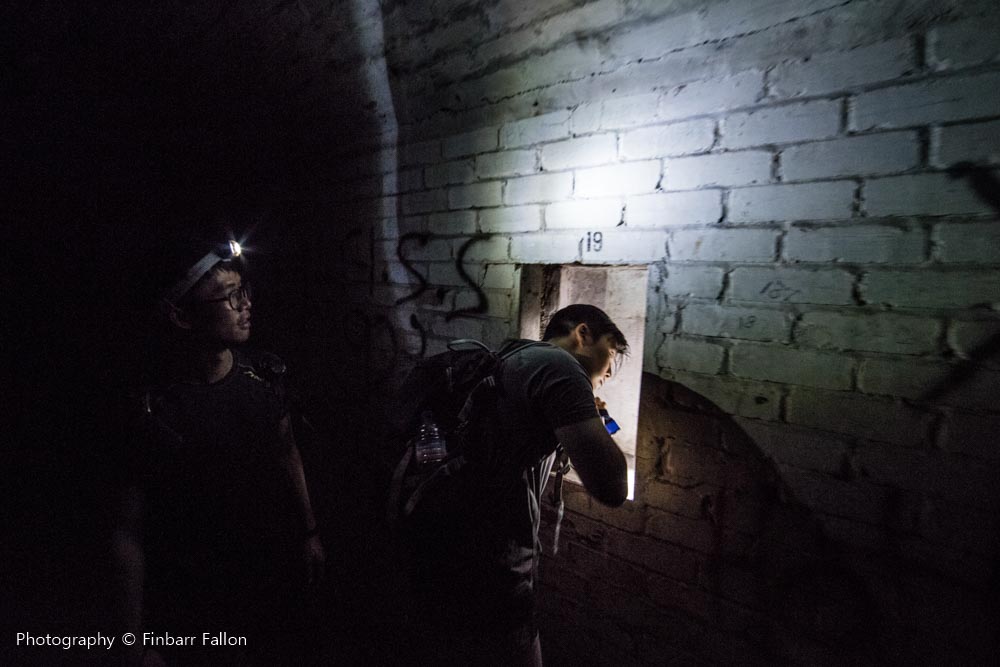
The basement contained an artillery and shell store for the battery above and ammunition was hoisted up through openings in the ceiling. A drainage passage runs around the outside of these rooms which was large enough to crawl into, but was incredibly muddy due to the recent rainfall – so we did not venture in.
Further up the hill lies a larger emplacement, with casemates and magazine stores embedded into the hillside which served two more artillery guns. A series of passageways attached to these rooms zigzagged further into the hill, eventually leading to a large corridor which contained a heavy duty red hatch, which had been propped open.



A rusty ladder descended into the black depths, the bottom barely illuminated by our torch lights. Despite our intrigue as to what could be down there, we decided to not risk venturing down without knowing the structural integrity of the ladder. The room at the bottom is presumably some sort of shelter for use in the event of bombing, as it had metal ventilation shafts which supplied fresh air from the surface
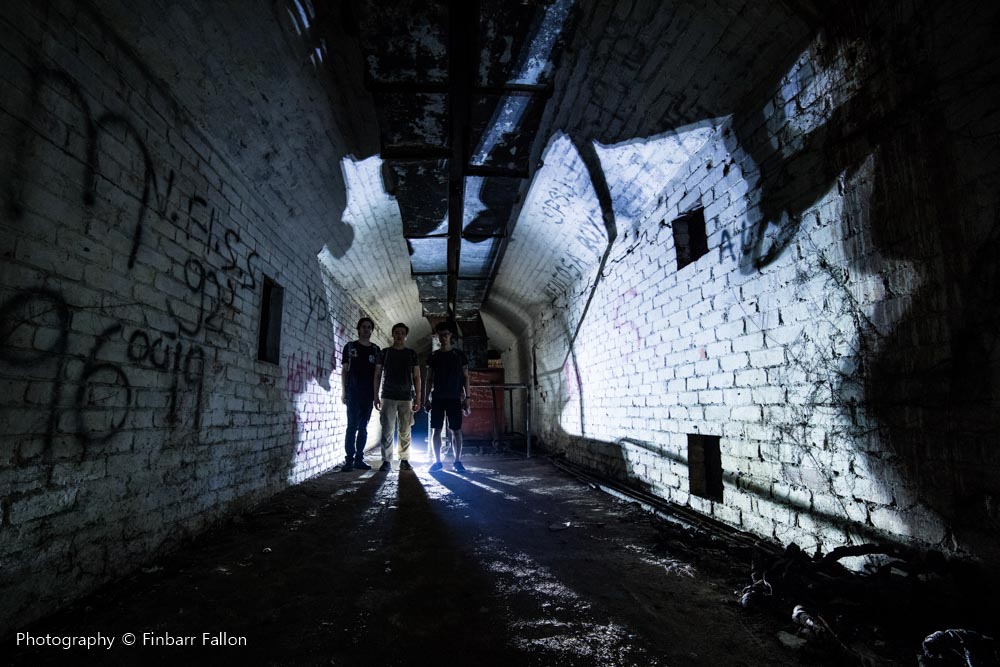
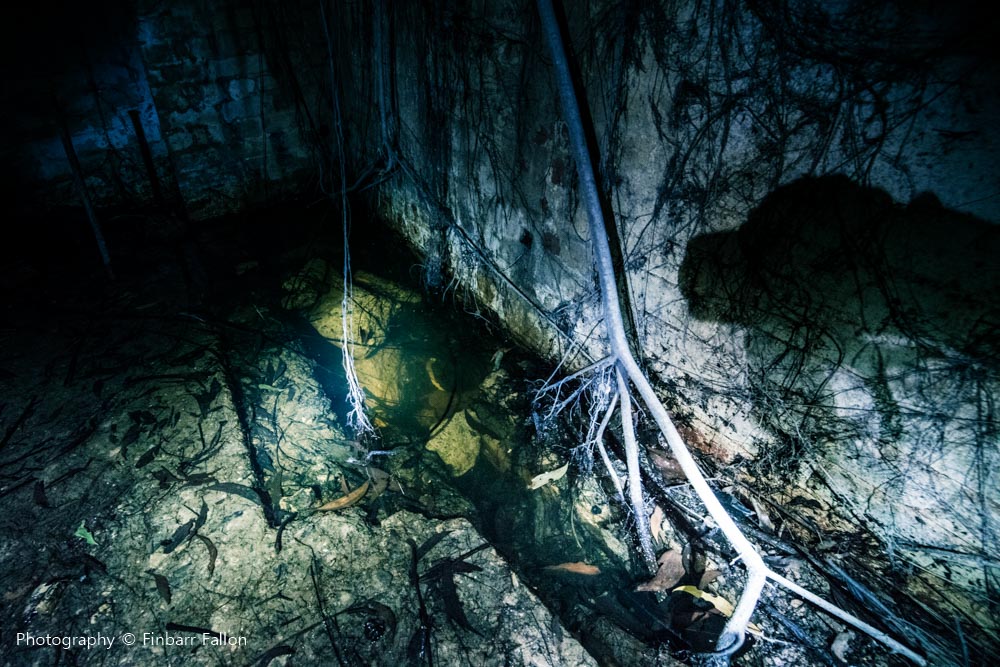
A flooded corner of the tunnel was teaming with aquatic life, with fish that had somehow managed to find their way into the tunnel!
A collapsed section of tunnel, with a retaining concrete wall for the adjacent subterranean reservoir.


After hunting in the undergrowth for a good fifteen minutes, we finally stumbled upon an access hatch to the reservoir which was hidden among the bushes. The opening led down to a very small staircase which led onto a concrete divider within the reservoir.
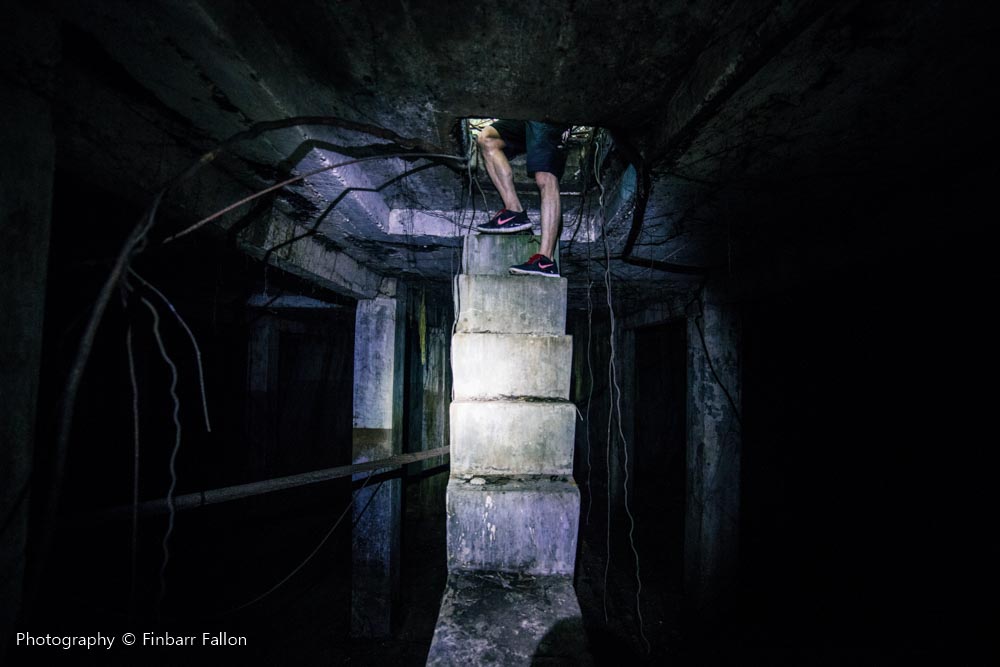
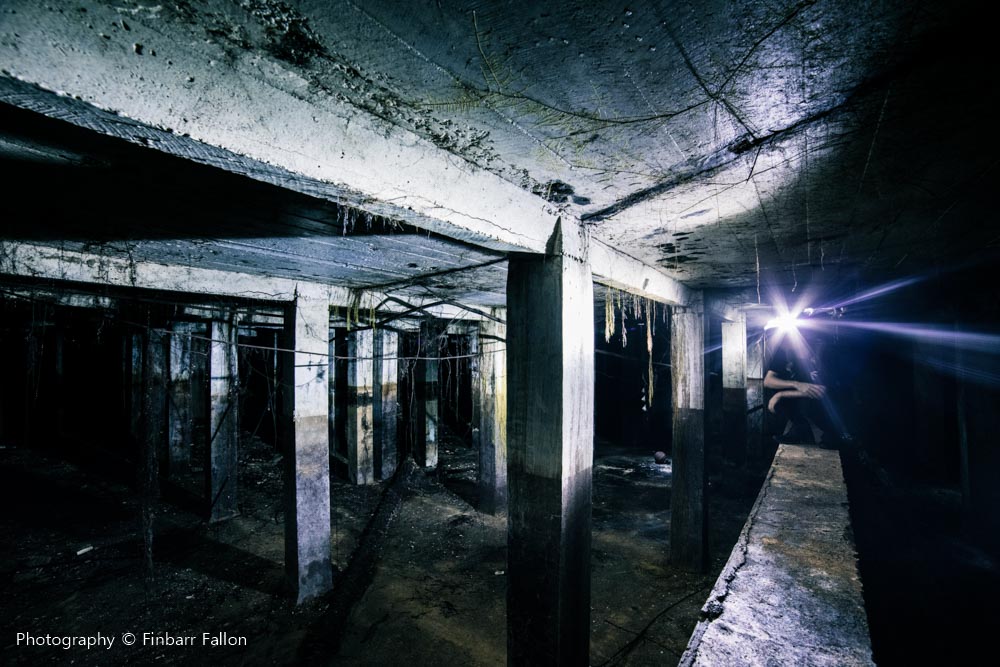
The space was surprisingly expansive inside, with columns stretching into the distance. Roots from above had infiltrated the ceiling, creeping along the structural beams and seemed to be enjoying the moist space.